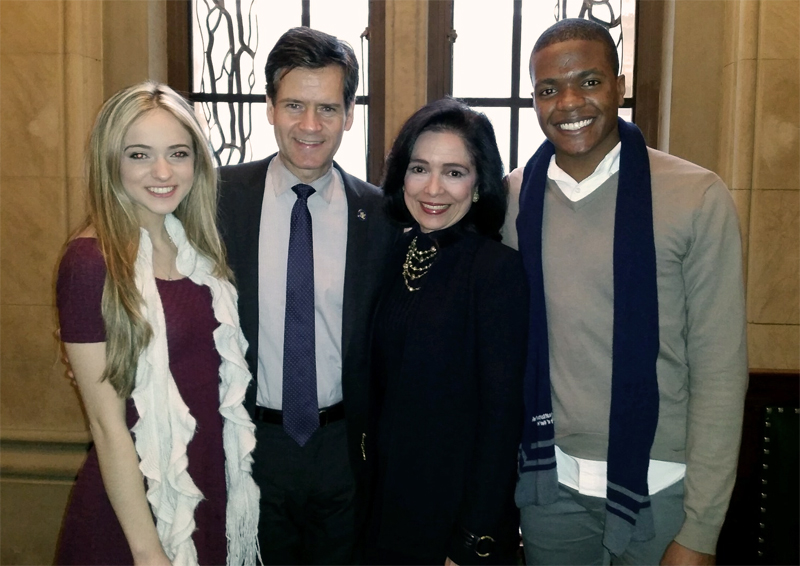It is budget time in Albany and on the long list of items being negotiated is one of prime importance to FIT: how much funding will the state’s community colleges receive in base aid. Earlier this month, I joined a small, but potent contingent of FIT representatives to travel to Albany to lobby for the best possible outcome for FIT and our sister SUNY campuses.
In fact, we do this every year while the legislature is wrestling over the budget. We are not the only college to do so. SUNY itself mounts aggressive advocacy campaigns. This year, we spent part of our two days in Albany with the New York Community College Trustees and the New York Community College Association of Presidents, who were there on behalf of the base aid issue as well.
Before I even go into the details of what we want, I have to state the obvious: this is an extremely hectic and important time in Albany. By law, the budget must be passed by April 1. Governor Cuomo has already issued his proposed executive budget. While we were there, endless numbers of special interest groups—many wearing bright t-shirts or hats brandishing their logos—were crowding the elevators and the marble hallways of the ornate old Capital and the legislative office building, hoping for two minutes or ten with a legislator or a staff member. Despite the freezing weather and piles of snow outside, thousands of people were out there, rallying for one cause or another.
Capturing the attention of legislators under these circumstances is a task that combines the labors of Hercules with the film Groundhog Day, in which—for us—the same day is repeated again and again as though it’s the first time. With each and every legislator, we explain and entreat—and, dare I say, we do it enthusiastically and effectively: we capture their attention. We arrive every year fully prepared, thanks to the diligent advance work conducted by our director of government relations, Lisa Wager, and our vice president for finance and administration, Sherry Brabham, both of whom were part of our small traveling team.
But as persuasive as our funding arguments always are, nothing is as powerful and persuasive as the students who accompany us. They are FIT’s best advertisement.

Legislators love them. Indeed, one of the great pleasures of these trips for me is to witness the interaction between the legislators and our students. This year, we had Annmarie Arnone, a first year illustration major from Nassau County, and Christopher Wallace, a third year production management major from Brooklyn, who is president of the Student Association. You should have seen them! With poise, humor and energy, these very articulate students talked about their life at FIT with total conviction and affection. I am convinced that these students are the reason our Albany representatives greet us each year with such enthusiasm.
I should add that we were able to show off our faculty by presenting each legislator with a signed and framed sheet of the U.S. Postal Service’s 2015 Lunar New Year stamp, commemorating The Year of the Ram, illustrated by Professor Kam Mak—one of several of our faculty who have designed US postage stamps.

Our effort in Albany was largely to advocate in support of SUNY’s community college funding request—its Rational Revenue Plan—for base aid increases. This calls for an increase of $250 per full-time equivalent (FTE) student for each of the coming three years. The governor has proposed no increase at all in base-aid for the coming year. Last year, we ended up receiving only $75 per FTE—leaving us with less money per FTE than we received in the darkest days of the recession.
We met “formally” with numerous influential senators, including our own Senate representative Brad Hoylman, Senators Ken LaValle, who chairs the senate higher education committee and Toby Ann Stavisky, who is the ranking Democratic member of the senate higher education committee. We also met with Assembly members Denny Farrell, chair of the ways and means committee, and higher education chair Deborah Glick—and had opportunities to greet other legislators as well. As demanding as these visits are, they are well worth it, not only to add our voice to those of our sister campuses advocating for the funds we all need, but also because it gives us one more opportunity to raise high the FIT flag.